|
|
Post by iameye on Feb 27, 2011 6:51:01 GMT -5
wplj.com/Article.asp?id=2119881&spid=36851The piece is called Ocean's Kingdom, which Paul describes as "basically a romantic story" in which "the daughter of the ocean king falls in love with the brother of the earth king." Noting that in his story, the ocean kingdom represents purity, while the earth kingdom are the "baddies," he tells the Times, "You'll have to see whether the couple make it. There's all sort of troubles along the way." 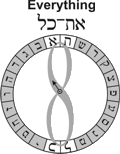 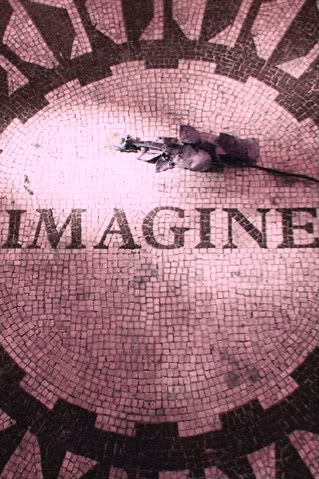 It ain't nothing but a tape loop in a big dance hall. ps YOU ARE LATE!
|
|
|
|
Post by iameye on Mar 3, 2011 5:52:03 GMT -5
 www.paulmccartney.com/home.php www.paulmccartney.com/home.phplol ;D Paul Collaborates On World Premiere NYC Ballet Paul And Peter Martins To Collaborate On World Premiere Ballet For New York City Ballet’s 2011/2012 Season PaulMcCartney.com announces today that Paul and NYCB’s Ballet Master in Chief Peter Martins will collaborate on a World Premiere ballet for the Company’s 2011/2012 season. The new ballet, which will premiere at NYCB’s Fall Gala performance on Thursday 22nd September 2011, will mark the first time that Paul has written an original orchestral score for dance. Paul said: “I am always interested in new directions that I haven’t worked in before. So I became very excited about the idea. When I got back to England after meeting Peter I started writing music and am now in the very final stages of the orchestral score.” He continued, “What was interesting was writing music that meant something expressively rather than just writing a song. Trying to write something that expressed an emotion – so you have fear, love, anger, sadness to play with and I found that exciting and challenging.” |
|
|
|
Post by iameye on Mar 3, 2011 14:05:46 GMT -5
Upon this Rock, I will build my church.
Ha ha ha!
|
|
|
|
Post by Doc on Mar 3, 2011 19:18:41 GMT -5
 www.paulmccartney.com/home.php www.paulmccartney.com/home.phplol ;D Paul Collaborates On World Premiere NYC Ballet Paul And Peter Martins To Collaborate On World Premiere Ballet For New York City Ballet’s 2011/2012 Season PaulMcCartney.com announces today that Paul and NYCB’s Ballet Master in Chief Peter Martins will collaborate on a World Premiere ballet for the Company’s 2011/2012 season. The new ballet, which will premiere at NYCB’s Fall Gala performance on Thursday 22nd September 2011, will mark the first time that Paul has written an original orchestral score for dance. Paul said: “I am always interested in new directions that I haven’t worked in before. So I became very excited about the idea. When I got back to England after meeting Peter I started writing music and am now in the very final stages of the orchestral score.” He continued, “What was interesting was writing music that meant something expressively rather than just writing a song. Trying to write something that expressed an emotion – so you have fear, love, anger, sadness to play with and I found that exciting and challenging.” I look forward to at least hearing this work; it would be better to see it as well but one never knows if one might be in NYC......... still, I know they'll be a CD--or maybe even---a DVD of the performance. Hmmm... |
|
|
|
Post by iameye on Mar 3, 2011 20:05:50 GMT -5
HEY, WE'RE IN LUCK. MACCA sent me a pre View. 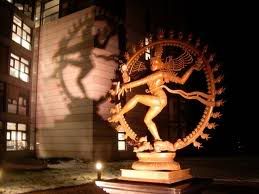 O'see'n's King Dom  Now we're'a dancer  |
|
|
|
Post by iameye on Mar 3, 2011 20:53:29 GMT -5
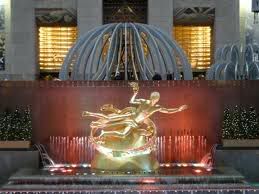 3D Rock  |
|
|
|
Post by iameye on Mar 3, 2011 21:07:02 GMT -5
lastly, through a hog's head don't be late!  |
|
|
|
Post by iameye on Mar 3, 2011 21:52:06 GMT -5
|
|
|
|
Post by iameye on Mar 4, 2011 7:06:31 GMT -5
But the Sun's rollin' high in the saphire sky Ocean's Kingdom  |
|
|
|
Post by iameye on Mar 7, 2011 9:34:27 GMT -5
 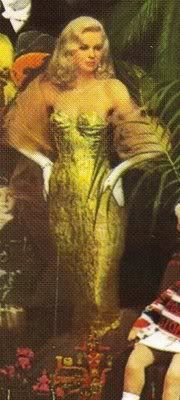 clothed in the sun lol ;D |
|
|
|
Post by iameye on Mar 7, 2011 14:21:28 GMT -5
  clothed in the sun lol ;D two suns reflecting eachother, get it? Sure you do. |
|
|
|
Post by iameye on Sept 21, 2011 9:16:17 GMT -5
|
|
|
|
Post by iameye on Sept 21, 2011 10:00:37 GMT -5
 get back to the Egg  |
|
|
|
Post by iameye on Sept 21, 2011 21:14:24 GMT -5
Ocean's Kingdom OK lol  but actually, I was looking for the one that explained the mason "G" greek link to "sorrow"  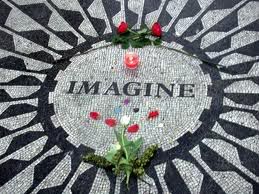 |
|
|
|
Post by iameye on Sept 22, 2011 5:53:05 GMT -5
|
|
|
|
Post by iameye on Sept 22, 2011 8:19:48 GMT -5
From a mess to the masses Serenity Now "clearness, serenity," from serenus (see serene). Earliest use (mid-15c.) was as a title of honor for kings. serene c.1500, "clear, calm," from L. serenus "peaceful, calm, clear" (of weather), of unknown origin. John has the telescope eye  right? right  lol  |
|
|
|
Post by iameye on Sept 22, 2011 9:03:29 GMT -5
Bring back my Bonnie to me! 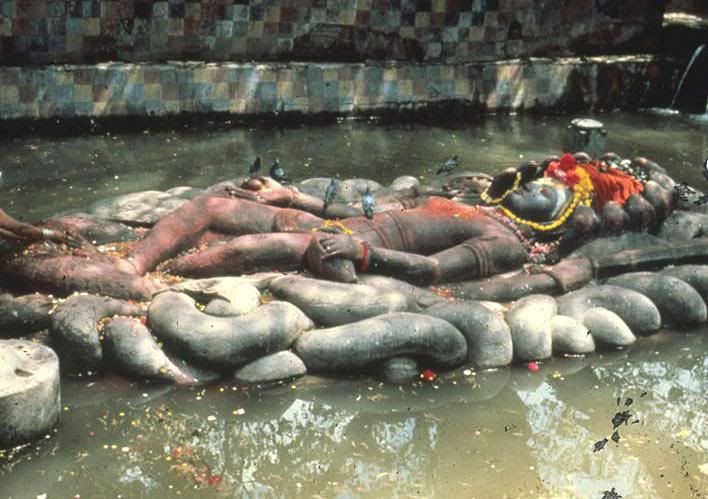 Lying on the Ocean of Eternity, resting comfortably lol  "he falls back upon the earliest and greatest of Revelations, those of the Sacred Books of India with a Cosmogony which no European conception has ever surpassed." Until NOW!  " All rivers flow into this shoreless ocean of nothingness. In this eternal well of being I manifest my dreams as countless reflections, fragmented dreamscapes, I am at once the birth and dissolution of the Universe. "www.hinduwisdom.info/Hindu_Cosmology.htm |
|
|
|
Post by iameye on Sept 22, 2011 10:20:50 GMT -5
Stella created the wardrobe for the ballet. The meaning of Stella is "star" The dancers remind me of tattoos. lol   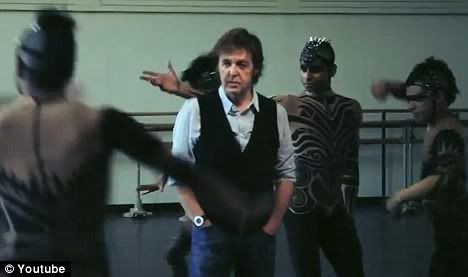  Making a dead man come. lol  She's a mean, mean machine She's a mean, mean machine |
|
|
|
Post by iameye on Sept 22, 2011 11:01:30 GMT -5
like this the everlasting present ballet  |
|
|
|
Post by iameye on Sept 22, 2011 11:29:53 GMT -5
It's a little bit funny...  |
|
|
|
Post by iameye on Sept 22, 2011 21:21:08 GMT -5
We go dancing in. Shiva's dance is a symbol of the unity and rhythm of existence. The unending, dynamic process of creation and destruction is expressed in the energetic posture of Shiva. He dances in a ring of fire that refers to the life-death process of the universe. Everything is subject to continual change, as energy constantly assumes new forms in the "play" (lila) of creation, except the god himself whose dance is immutable and absolute. The pictorial allegory of Nataraja indicates the so-called "five acts" of the deity: the creation of the universe, its sustenance in space, its final dissolution at the end of the cycle of four world ages (yugas), the concealment of the nature of the godhead, and the bestowal of true knowledge.
Jawaharlal Nehru (1889-1964) first prime minister of free India, was more than a deeply moral human being. He yearned for spiritual light. He was particularly drawn to Swami Vivekananda and the Sri Ramakrishna Ashram. In his book - A Discovery of India he wrote:
"The statue of Nataraja (dance pose of Lord Shiva) is a well known example for the artistic, scientific and philosophical significance of Hinduism."
(source: A Discovery of India - By Jawaharlal Nehru p. 214).
Shiva's dance is a symbol of the unity and rhythm of existence. :DThe unending, dynamic process of creation and destruction is expressed in the energetic posture of Shiva. He dances in a ring of fire that refers to the life-death process of the universe.
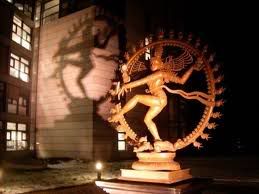
***
Fritjof Capra (1939 - ) Austrian-born famous theoretical high-energy physicist and ecologist wrote:
"Modern physics has thus revealed that every subatomic particle not only performs an energy dance, but also is an energy dance; a pulsating process of creation and destruction. The dance of Shiva is the dancing universe, the ceaseless flow of energy going through an infinite variety of patterns that melt into one another’’.
For the modern physicists, then Shiva’s dance is the dance of subatomic matter. As in Hindu mythology, it is a continual dance of creation and destruction involving the whole cosmos; the basis of all existence and of all natural phenomenonThe basic recurring theme in Hindu mythology is the creation of the world by the self-sacrifice of God - ‘sacrifice’ in the original sense of ‘making sacred’ - whereby God becomes the world which, in the end, becomes again God. This creative activity of the Divine is called lila, the play of God, and the world is seen as the stage of the divine playselling poppies from a tray  |
|
|
|
Post by iameye on Sept 22, 2011 21:26:22 GMT -5
I know what l ila means  en.wikipedia.org/wiki/Lila Lila (Sanskrit: लीला, IAST līlā), or Leela is a concept within Hinduism literally meaning "pastime", "sport" or "play". It is common to both non-dualistic and dualistic philosophical schools, but has a markedly different significance in each. Within non-dualism, Lila is a way of describing all reality, including the cosmos, as the outcome of creative play by the divine absolute (Brahman). In the dualistic schools of Vaishnavism, Lila more simply refers to the activities of God and his devotees, as distinct from the common activities of karma. en.wikipedia.org/wiki/Lila Lila (Sanskrit: लीला, IAST līlā), or Leela is a concept within Hinduism literally meaning "pastime", "sport" or "play". It is common to both non-dualistic and dualistic philosophical schools, but has a markedly different significance in each. Within non-dualism, Lila is a way of describing all reality, including the cosmos, as the outcome of creative play by the divine absolute (Brahman). In the dualistic schools of Vaishnavism, Lila more simply refers to the activities of God and his devotees, as distinct from the common activities of karma.
 Instant karma's gonna get you, she is anyway.  lol  |
|
|
|
Post by iameye on Sept 22, 2011 21:57:39 GMT -5
Like most of Hindu mythology, the myth of lila has a strong magical flavour. Brahman is the great magician who transforms himself into the world and the performs this feat with his ‘magic creative power’, which is the original meaning of maya in the Rig Veda. The word maya - one of the most important terms in Indian philosophy - has changed its meaning over the centuries. From the might, or power, of the divine actor and magician, it came to signify the psychological state of anybody under the spell of the magic play. As long as we confuse the myriad forms of the divine lila with reality, without perceiving the unity of Brahman underlying all these forms, we are under the spell of maya. (...) In the Hindu view of nature, then, all forms are relative, fluid and ever-changing maya, conjured up by the great magician of the divine play. The world of maya changes continuously, because the divine lila is a rhythmic, dynamic play. The dynamic force of the play is karma, important concept of Indian thought. Karma means ’action’. It is the active principle of the play, the total universe in action, where everything is dynamically connected with everything else. In the words of the Gita Karma is the force of creation, wherefrom all things have their life.  —Fritjof Capra, The Tao of Physics (1975    Nice watch, Macca. Do you know what time it is? ;D
|
|
|
|
Post by iameye on Sept 22, 2011 22:42:21 GMT -5
L.I.L.Y. The Roots of Lila
Coomaraswamy (1941) in his article on Lila, after noting and discussing the pervasiveness of play, points out that the actual Sanskrit word lila is of post-Vedic origin. He traces lila’s roots, which he contends “must be related with lelay, ‘to flare’ or ‘flicker or ‘flame’ ” (p. 99) concluding:
We have been able to trace, accordingly, not only the continuity and universality of the notion of the divine activity thought of as a kind of game and dalliance, but also to recognize in the “play” of a flickering flame or vibrant light the adequate symbol of this epiphany of Spirit. (p. 101) 
In Homo Ludens, Huizinga (1944/1955), also discusses the etymology of lila in his chapter on the play concept expressed in language. He notes that rapid movement is at the heart of all Sanskrit words involving play, and that the idea of lila also connotes “all of the light effortless, and insignificant sides of playing… lila is used in a sense of ‘as if’ to denote ‘seeming,’ ‘imitation,’ the ‘appearance’ of things, as in the English word ‘like,’ ‘likeness’” (p. 32).
Divine Playfulness
Etymologically, play is innate to the divine because the word “divine” comes from the Indo-European root dyeu meaning "to shine" (AHD, 2000b, online). The Sanskrit words deva and devi meaning "god" and "goddess" reflect this, too, and one of the meanings of the word div is sport (Baümer, 1995). Other interesting meanings are quicksilver, the supreme spirit, a fool, a child, and a lover (Apte, 2000, online). Out of this root, come familiar words associated with different divinities: deus, Zeus, Dione, Diana, Iovis, Jupiter, Jove, and Tiu—the Nordic sky god (Tuesday) (AHD 2000a, online). Cousineau (2004b) talks about the origin of the word sport as being desporto, "carried away, transported."
With this divine playfulness in mind, we will first look at the lila of the goddess and then the explore concept of maya (illusion) with which she is most often associated, before later considering the lila of the gods.
The Lila of the Goddess
McLean (1995) explains that the lila of the Goddess has been described like the game: playful but unpredictable, and yet the consequences of Her game can have momentous significance.  McLean notes three major features of the Goddess’s lila: 1) she deludes the inhabitants of all three worlds, 2) it is a kind of game on Her part and 3) She appears to be quite mad, because the unpredictability of Her maya, which can take on a frightening nature. She seems to toy with Her creation, and we are held by Her maya. Ramprasad, a devotee of the Goddess, composed a song about Her where the game is kite-flying: McLean notes three major features of the Goddess’s lila: 1) she deludes the inhabitants of all three worlds, 2) it is a kind of game on Her part and 3) She appears to be quite mad, because the unpredictability of Her maya, which can take on a frightening nature. She seems to toy with Her creation, and we are held by Her maya. Ramprasad, a devotee of the Goddess, composed a song about Her where the game is kite-flying:
Mother Syama flies kites
(in the marketplace of the world).
They are mind-kites, floating in the winds of hope, held by the strings of maya.
The frames are made from bones and sinews, covered in exquisite workmanship with her own attributes,
Their strings are coated with the glue of worldliness so their cutting edge is keen.
Of a hundred thousand of them only one or two break free, and you Mother laugh and clap your hands.
Prasad says, “they fly away on the southerly wind.
Over the sea of the world to freedom on the other side. (McLean, 1995, p. 89)
This poem is about the salvation of individuals, and most do not make it and are not saved because they are helplessly held or deluded by Her maya, and She claps and laughs about this—oh great! Ramakrishna, commenting on this poem notes “She is full of play. This world is Her lila. She is willful, full of joy” (McLean, p. 89). She completely deludes most people and is a magician, a trickster, and hides behind a show of magic and pretence, sometimes adopting the form of other deities. Like the other gods, She is ambiguous by nature and is on par with Vishnu or Shiva and may even be more powerful.
cool!  www.cosmicplay.net/Cosmic/Cosmoq/cosmiclila1.html www.cosmicplay.net/Cosmic/Cosmoq/cosmiclila1.html |
|
|
|
Post by skyward on Sept 22, 2011 23:37:32 GMT -5
L.I.L.Y. The Roots of Lila
Coomaraswamy (1941) in his article on Lila, after noting and discussing the pervasiveness of play, points out that the actual Sanskrit word lila is of post-Vedic origin. He traces lila’s roots, which he contends “must be related with lelay, ‘to flare’ or ‘flicker or ‘flame’ ” (p. 99) concluding:
We have been able to trace, accordingly, not only the continuity and universality of the notion of the divine activity thought of as a kind of game and dalliance, but also to recognize in the “play” of a flickering flame or vibrant light the adequate symbol of this epiphany of Spirit. (p. 101) 
In Homo Ludens, Huizinga (1944/1955), also discusses the etymology of lila in his chapter on the play concept expressed in language. He notes that rapid movement is at the heart of all Sanskrit words involving play, and that the idea of lila also connotes “all of the light effortless, and insignificant sides of playing… lila is used in a sense of ‘as if’ to denote ‘seeming,’ ‘imitation,’ the ‘appearance’ of things, as in the English word ‘like,’ ‘likeness’” (p. 32).
Divine Playfulness ;D Liljor - VikingarnaRight Beside You - Sophie B HawkinsNice oceany video from her Whaler album.  |
|